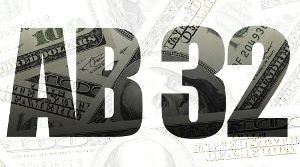AB 32 revenue: Some for bullet train, some for pork, none for poor
by Chris Reed | September 27, 2014 7:30 am
 Before and after AB 32’s passage in 2006, a whole lot of promises and guarantees were made. Some are remembered. Many aren’t.
Before and after AB 32’s passage in 2006, a whole lot of promises and guarantees were made. Some are remembered. Many aren’t.
One of those was the pledge to use a portion of cap-and-trade funds to directly help poor people make ends meet, since the increase in energy costs resulting from the law would have a regressive effect. (Yes, in the old days, people didn’t actually pretend that AB 32 would make energy cheaper.)
Here’s what I wrote in early 2012[1]:
I remember a discussion with former Schwarzenegger adviser David Crane and other fans of AB 32 about the fact that higher energy costs are going to be much harder on poor people than the middle class or rich. I was told, no, the cap-and-trade fees would be used to insulate them from the economic pain caused by the regressive effects of higher energy costs.
Instead, the governor is claiming a big chunk for his insane bullet-train project. And the rest of the cap-and-trade fees? They’re viewed as just another source of funds for legislative pork, with regional interests duking it out over who gets the earmarks. This is from the L.A. Times[2]:
Bay Area public officials are challenging a state plan to spend hundreds of millions of dollars to fight climate change by cleaning the air in some of California’s poorest and most polluted communities, most of which are in Southern California.
The officials say the state’s method of determining which communities are helped is flawed because it would exclude some of their region’s most at-risk residents.
The funds come from the state’s cap-and-trade program, which began in 2012 and requires companies to buy carbon pollution permits at auctions. State law requires at least 25% of the proceeds to go to greenhouse gas-cutting projects that benefit disadvantaged communities. Another 25% is set aside for the high-speed rail project between Los Angeles and San Francisco and the rest can be spent to reduce carbon emissions across the state.
To pinpoint the neediest communities, the California Environmental Protection Agency spent years and about $1.5 million developing a screening tool that uses 19 measures of environmental exposure, health risk and socioeconomic status.
Using that analysis, more than half the funds would go to Los Angeles County communities and most of the rest to other areas of Southern California and the San Joaquin Valley. Less than 5% would go to the Bay Area.
Projects, to be chosen and administered by about a dozen state agencies, could include tree plantings in urban neighborhoods, financial assistance for low-income residents to install solar panels and more efficient appliances and rebates for zero-emissions cars, trucks and buses aimed at communities near heavy traffic. …
In a letter to Cal/EPA last month, 20 state legislators from the Bay Area said the state’s analysis “overlooks a large number of communities that, by any measure, are some of the most polluted and disadvantaged in the state.”
So much for helping the poor with higher energy costs
Does this sound like a careful attempt to help poor people deal with high energy costs? Or just the really lame reality that cap-and-trade funds are going to pay for the standard liberal agenda — porky stuff which has no track record of actually, yunno, helping poor people deal with the fact that all energy will cost more under AB 32?
Obviously, it’s the latter.
Hey, David Crane: Are tree plantings in urban neighborhoods what you had in mind when you were fretting about how to deal with the regressive cost of AB 32?
- early 2012: http://www.calwhine.com/jerry-said-what-about-high-speed-rail-its-time-to-revive-the-gov-moonbeam-label/1956/
- L.A. Times: http://www.latimes.com/science/la-me-adv-climate-funds-20140924-story.html
Source URL: https://calwatchdog.com/2014/09/27/ab-32-fee-revenue-some-for-bullet-train-some-for-pork-none-for-poor/